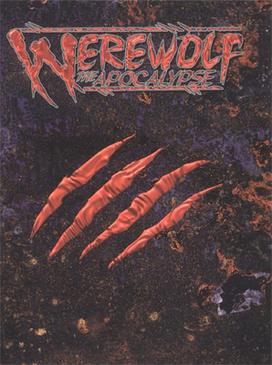People have been playing World War Two wargames since...well...since probably before World War Two even took place. I suppose it all depends on your definition of "wargame" - from very theoretical strategic-level "what-if" scenarios to training exercises to mathematical equations. And of course, after the war and ever since, young men (and some young women) have pitted toy soldiers against each other to battle it out for control of the free world.
So while to comes as no surprise that yet another WW2 wargame has been published, I have to say that
Warlord Games' Bolt Action is the first WW2 wargame to really catch my eye. Don't get me wrong - I think
Flames of War is a cool game, and I want to eventually get into it, but I do feel a preference for the individual-soldier model scale of BA as opposed to the squad-stand scale of FoW. Perhaps it is my prior Games Workshop models experience biasing me in that direction, for better or for worse, but the idea of having one model represent one individual soldier just appeals to me more.
Let me back up for a second.
Bolt Action is a 28mm ("heroic") scale WW2 miniatures wargame. Each side plays a force vaguely built around a reinforced infantry platoon - typically a Platoon Leader and 2-5 squads of 5-12 men apiece, plus additional support elements such as machine gun teams, mortars, anti-tank weapons, snipers, transports, as well as other elements such as artillery and armor. Your average Regular infantryman for all armies is 10 points per model, but adding in extra goodies such as your officers, medics, air or artillery forward observers, heavy and special weapons, as well as vehicles, and you can quickly spend 1,000 points (the default game size) without the need for a hundred-plus models (A King Tiger tank with Veteran crew is over 600 points).
Coming from a Games Workshop background, I was able to quickly grasp the basics of how the gameplay is handled - setup, movement, shooting, close assault, morale, line of sight, use of cover and so forth. I won't get into too many nitty-gritty details but I think the game handles all elements quite well, in many cases better than
GW's Warhammer: 40,000. Rather than a "I move/shoot/attack with all my guys, then you go with yours", each player puts a number of colored action dice into a bag, one die per unit. At the beginning for the turn a die is pulled from the bag. Whoever has that color for their action dice picks a unit, gives the unit one of six orders (corresponding to one of six die faces), puts the die next to the unit, carries out the order, and then another die is drawn. This means that order of action is pure chance - you could activate and use all your units before your opponent gets to do anything, or you could be the one left standing there doing nothing, or it could be a very even back-and-forth of move and counter-move. It's all up to luck, and I like that idea a lot.
Moving and shooting is all pretty standard. Weapons are grouped into broad categories, with the occasional special rule for those particular weapons that need them. For example, all "rifles" are the same, but US infantry ignore shooting-on-the-move penalties because of the superior firepower of the M1 Garand compared to other armies' bolt-action rifles. This more generic handling of weapons keeps the endless "the MP-38 was
far superior to the Sten MK II" debates to a dull roar, and helps remind the players that this is a game definitely designed for
fun, casual gameplay. It is, very specifically, not a win-at-all-costs sort of wargame, where being a dick to your opponent and arguing every rule to death is just one more weapon in your arsenal.
The
Bolt Action rulebook is a nice, compact hardcover containing all the rules needed to play, as well as how to build an army, abbreviated army lists for all major European Theater forces (US, UK, Germany, and the Soviet Union). There are a lot of great diorama shots using painted models and terrain, as well as a ton of
Osprey Publishing artwork (I'm not exactly certain of their relationship - I think Osprey owns Warlord Games). The rules are easy to read and strike a good balance between realism and gameplay. For example, there can be only one outcome in a close combat - complete wipeout of the losing unit. If a draw is achieved, the fight immediately goes on, until one side loses and gets wiped out. This doesn't necessarily mean every member of the losing side is killed - perhaps they surrender, play dead, or flee - but the unit ceases to exist. As a GW player, I can appreciate the decisive nature of this rule, as it prevents "tar pit" units locking two units together for multiple turns and bogging down the game. Another good rule states that if the model directly using a support weapon is killed off, the rest of the weapon team is eliminated and the unit is taken off the board. This might be unnecessarily harsh, but it prevents tiny ineffectual units of 1-3 infantry from cluttering up the board, and remember - every "unit" has an action die in the bag.
Beyond the main rulebook, there are currently (as of today) army books for the US, UK, and German armies. These repeat and refine the units given in the core rulebook, as well as add further units, weapons, and a few special rules. You could certainly play the game with just the lists provided in the core book, but the individual army books add a lot more flavor, and provide a much deeper dive into the armies over the course of the war (a number of units have "early" war and "mid-late" war versions). Vehicles especially have an almost endless variety of marks and versions that changed over the course of the war and the theater they were in. This allows for players who want to carefully tailor an army list to a specific time, theater, and unit to do so.

As for Warlord Games' line of miniatures, I think they are quite good. Perhaps not at the quality of Games Workshop's current line, but given the insane costs of most GW armies today, I think the slightly loss of quality is more than made up for in the much lower price, at least price per "army". Putting together a starter list of British Commandos, I was able to build a Platoon with one Officer, two infantry squads, two special weapon teams, a medium machine gun team, and a mortar team for about sixty bucks. That's seven units, and about 650 points. Another box of infantry and perhaps one vehicle (at about 20-35 bucks apiece, depending on what you get) would bring me to 1,000 points, for a total of perhaps a little over a hundred dollars.
Given that a "cheap" Warhammer: 40,000 army would probably run you somewhere in the vicinity of $300-600, and the difference is readily apparent. Also, unlike GW games,
Bolt Action doesn't actually require you to play using their own models. If you have a bunch of other WW2 infantry and vehicles lying around, as long as they can be based one model per base (or you and your friends agree on rules for multi-model bases), you can use anyone's models, even if they aren't 28mm scale. For the money-conscious gamer, this is a great deal.
So far I haven't actually gotten around to building or painting my
Bolt Action miniatures, much less play out a game, but I'm really looking forward to it. Who knows, maybe those of you who've read my Commando novels will recognize a familiar face or two when I've finished getting my British army read for battle!





















